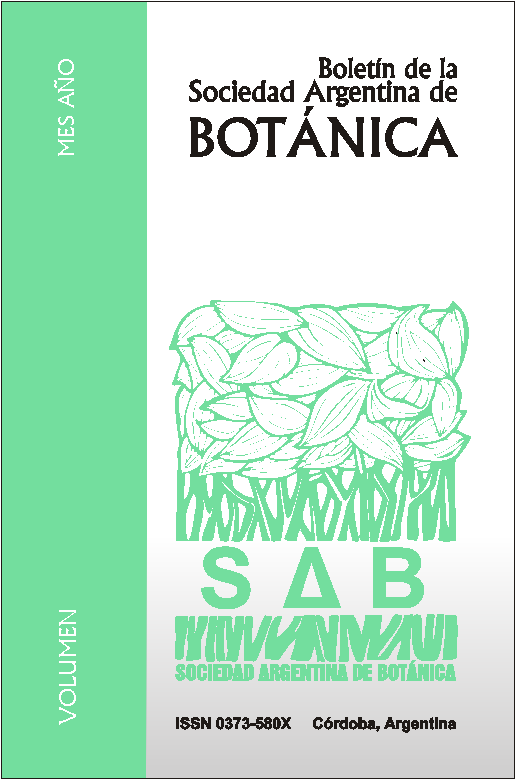Diversity of exotic plants in disturbed sites in Los Alerces National Park, Chubut Province (Argentina).
DOI:
https://doi.org/10.31055/1851.2372.v50.n1.10857Keywords:
, Conservation, disturbances, invasive species, Patagonia, protected area.Abstract
Diversity of exotic plants in disturbed sites in Los Alerces National Park, Chubut Province, Argentina. The proportion of exotic species in a protected area and its surrounding matrix area is influenced by the regime of natural and anthropogenic disturbances, the land use and visitors traffic to the area, enhancing susceptibility to exotic invasions. We used qualitative and quantitative approaches to compare the diversity of alien species in disturbed areas of Los Alerces National Park, northwest of the Chubut Province. We selected two sites under the disturbances: fire, grazing and camping, where transects of 50 m were established. In the Route Nº 71 we used transects of 150 m parallel to the road. The floristic composition and the relative abundance were recorded and diversity was estimated. To detect the presence of exotic species associated with a disturbance in particular we performed a Detrended Correspondence Analysis. A total of 67 alien species were recorded, with Taraxacum officinale, Dactylis glomerata, Holcus lanatus, Rumex acetosella and Rosa rubiginosa present in all sites. Burned and camping areas presented similar species richness and diversity, while camping and grazing sites had similar floristic composition. Basic information for detection and control of exotic plants within the park, especially those considered invasive, was providedDownloads
Downloads
Published
How to Cite
Issue
Section
License
Provides immediate and free OPEN ACCESS to its content under the principle of making research freely available to the public, which fosters a greater exchange of global knowledge, allowing authors to maintain their copyright without restrictions.
Material published in Bol. Soc. Argent. Bot. is distributed under a Creative Commons Attribution-NonCommercial-ShareAlike 4.0 International license.









